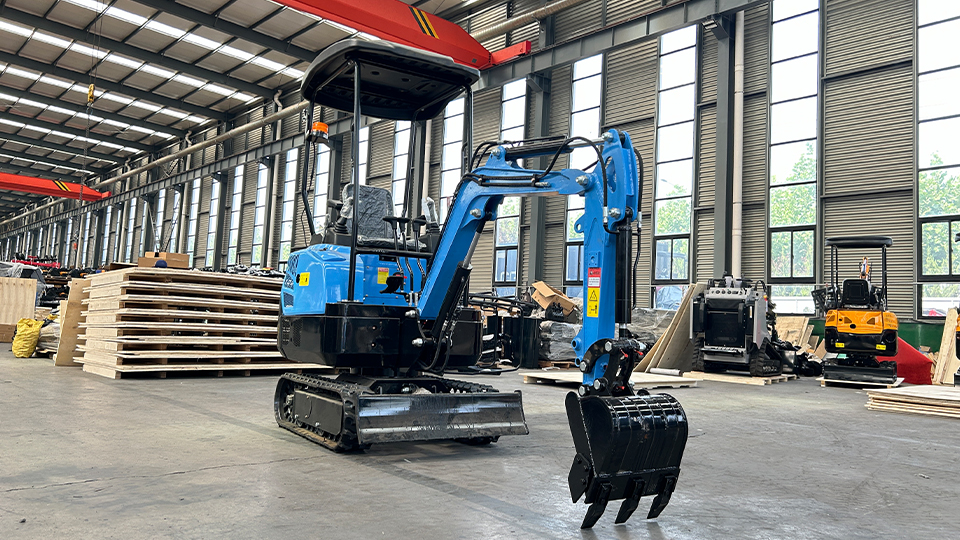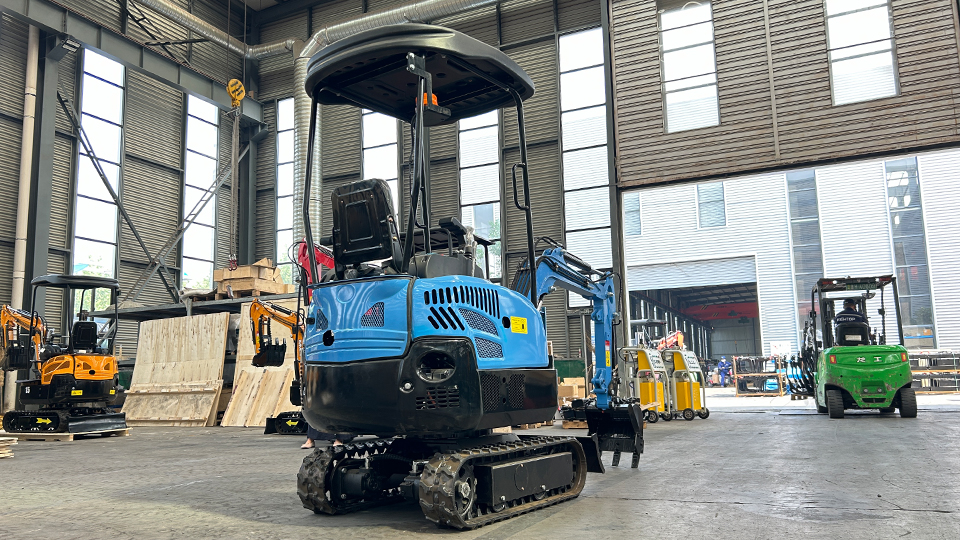Abstract
Renting an excavator is a strategic financial and operational decision for numerous construction, landscaping, and demolition projects, especially for short-term needs or specialized tasks. While the cost of excavator rental can be substantial, significant savings and efficiencies can be achieved by meticulously planning and understanding the market. This technical article provides a comprehensive guide on how to find the best excavator rental deals, covering factors from meticulous project assessment and understanding rental terms to leveraging technology, negotiating effectively, and implementing smart operational practices. The goal is to empower contractors and project managers to secure high-value rentals that optimize both budget and project outcomes.
1. Introduction: The Economics of Excavator Rental
1.1 The Necessity of Excavators: Briefly reiterate the critical role of excavators in various industries (construction, landscaping, utilities, demolition).
1.2 Rental vs. Ownership Revisited: Briefly touch upon why rental is often preferred for short-term, intermittent, or specialized projects (avoiding high capital costs, maintenance, storage, depreciation).
1.3 The Challenge of Rental Costs: Acknowledge that while renting is generally more cost-effective than buying for short-term needs, rental rates can still be a significant line item in project budgets.
1.4 Article Objective: To provide actionable strategies and technical insights for securing the most advantageous excavator rental deals without compromising on equipment quality or project efficiency.
2. Pre-Rental Planning: The Foundation of a Good Deal
The best deals are found long before you even contact a rental company. Thorough planning is paramount.
2.1 Meticulous Project Scope Definition:
Quantify the Work: Precisely define what needs to be done. (e.g., cubic yards of dirt to move, lineal feet of trench at a specific depth, number of concrete slabs to break). Technical Detail: Use engineering estimates and calculations to determine total work volume. This directly informs machine size and duration.
Site Conditions: Analyze ground type (rocky, sandy, clay), access limitations, slopes, utility locations, and overhead obstructions. This impacts machine requirements (e.g., track vs. wheel, standard vs. zero tail swing).
Required Attachments: Identify all necessary attachments beyond a standard digging bucket (e.g., hydraulic hammer, auger, grapple, tiltrotator). Each attachment adds cost and requires specific hydraulic capabilities.
2.2 Accurate Timeline Estimation:
Realistic Duration: Overestimate slightly to build in contingency for weather, unforeseen ground conditions, or minor equipment issues. Underestimating leads to costly extensions.

Daily Operating Hours: How many hours per day will the machine actually be working? Rental agreements often specify operating hours (e.g., 8 hrs/day, 40 hrs/week). Exceeding these incurs overtime charges.
Project Sequencing: Can the excavator work continuously, or will there be idle periods? Minimize idle rental time.
2.3 Operator Proficiency Assessment:
A highly skilled operator can complete tasks faster and more efficiently, reducing the overall rental duration and fuel consumption.
Technical Detail: A seasoned operator understands machine limits, optimizes digging cycles, and performs routine checks, preventing breakdowns and maximizing uptime.
2.4 Budget Definition:
Set a clear budget range for the excavator rental, including delivery, fuel, attachments, and potential overtime.
3. Choosing the Right Excavator: Precision for Cost-Effectiveness
Renting an oversized or undersized machine is a common mistake that leads to inflated costs or project delays.
3.1 Size Matters: Matching Machine to Task:
Mini-Excavators (0.5-8 metric tons): Ideal for tight spaces, residential landscaping, shallow trenching, small demolition. Overkill for large-scale excavation, but larger excavators are overkill for small jobs.
Medium Excavators (8-25 metric tons): Versatile for general construction, mid-sized foundations, utility work.
Large Excavators (25+ metric tons): For mass excavation, deep foundations, heavy demolition.
Technical Insight: Don't rent a 20-ton excavator for a 3-foot deep utility trench if a 5-ton mini-excavator can do the job faster and with less site disturbance. The smaller machine's rental rate, fuel consumption, and transport costs will be significantly lower.
3.2 Track vs. Wheel (Rubber vs. Steel):
Rubber Tracks: Better for sensitive surfaces (pavement, finished lawns), quieter, less ground pressure.
Steel Tracks: Superior traction and durability in rough terrain, rock, and demolition.
Wheeled Excavators: Faster on paved surfaces, good for urban environments where road travel is required.
Cost Implication: Incorrect choice leads to inefficiencies (e.g., steel tracks damaging a driveway requiring repair), or stuck equipment.
3.3 Understanding Key Specifications:
Digging Depth & Reach: Ensure the machine's capabilities match your required dimensions.
Breakout Force: Sufficient power to dig through your anticipated material (e.g., hard clay, rock).
Lift Capacity: If you need to move heavy objects (e.g., large pipes, concrete blocks).
Hydraulic Flow (GPM/LPM): Crucial for powering hydraulic attachments efficiently. Ensure the machine's hydraulic system can meet the attachment's requirements.

Tail Swing (Conventional vs. Reduced/Zero Tail Swing): Reduced tail swing models cost slightly more to rent but can prevent costly damage in confined spaces.
4. Researching Rental Companies: Beyond the Price Tag
A good deal isn't just about the lowest daily rate.
4.1 Compare Multiple Quotes:
Contact at least 3-5 different rental companies, including national chains and local independent businesses.
Why diverse sources? National chains may offer standardized rates and newer fleets. Local companies might be more flexible on pricing or offer specialized equipment and better customer service.
4.2 Inquire About All-Inclusive vs. Itemized Pricing:
Some quotes might seem low but exclude delivery, insurance, or specific attachments. Get a detailed breakdown of all potential charges.
Hidden Fees to Watch For: Environmental fees, cleaning fees, late return penalties, fuel surcharges, damage waivers.
4.3 Fleet Age and Maintenance Records:
Newer equipment might have higher rental rates but could be more reliable and fuel-efficient.
Inquire about their maintenance schedule and how they handle breakdowns. A well-maintained machine reduces downtime.
Technical Insight: A well-maintained machine is less likely to break down, preventing costly project delays.
4.4 Customer Service and Support:
How quickly do they respond to inquiries? What is their breakdown response time?
Can they offer technical advice on machine selection or operation?
Reliable support can save significant time and money if issues arise on site.
4.5 Delivery and Pickup Logistics:
What are their delivery lead times? Can they accommodate your schedule?
What are their transport costs? Can they deliver to your specific site conditions (e.g., steep driveway, soft ground)?
5. Negotiating and Securing the Deal
Don't be afraid to ask for better terms.
5.1 Leverage Longer Rental Periods:
Daily rates are typically the most expensive. Weekly rates are significantly cheaper per day, and monthly rates offer the best per-day value.
If your project might extend, negotiate a weekly or monthly rate upfront with the option to return early if completed.
5.2 Inquire About Package Deals:
If you're renting multiple pieces of equipment (e.g., excavator + skid steer + attachments), ask for a bundled discount.
Technical Insight: Rental companies want to maximize utilization of their entire fleet.
5.3 Off-Season or Slow Period Rentals:
Demand for excavators fluctuates seasonally. Rates might be lower during off-peak times (e.g., late fall, winter in some regions, or during economic slowdowns).
5.4 Early Booking Discounts:
Some companies might offer incentives for booking well in advance.
5.5 Ask About Used Equipment for Sale (if applicable):
While focused on rental, if a very long-term project unexpectedly arises, some rental companies also sell their older fleet. This is a niche strategy but worth knowing.
5.6 Loyalty Programs/Repeated Business:
If you're a regular customer, negotiate for preferential rates or terms.
5.7 Clearly Document Everything:
Ensure all agreed-upon terms (rates, hours, delivery, attachments, insurance, etc.) are explicitly stated in the rental contract. Read it carefully before signing.
6. Optimizing Rental Use for Cost Savings
Once the excavator is on site, smart practices continue to save money.
6.1 Efficient Operation:
Skilled Operator: As mentioned, a proficient operator is the single biggest factor in minimizing rental duration and fuel consumption.
Minimize Idling: Excessive idling wastes fuel and accrues hours on the hour meter, shortening your rental period without doing work. Instruct operators to shut down when not actively working for extended periods.
Planned Workflows: Organize the work efficiently to ensure continuous operation and minimize unnecessary movements.
6.2 Fuel Management:
Bulk Fuel: If you have multiple machines or a long project, consider ordering bulk diesel for better pricing than retail pumps.
Monitor Consumption: Track fuel usage to identify inefficiencies or potential machine issues.
6.3 Preventative Maintenance (Operator Level):
Daily Checks: Encourage operators to perform daily walk-around inspections (fluid levels, track tension, attachment pins, hose leaks). Catching small issues early prevents major breakdowns and costly downtime.
Cleanliness: Keep the machine clean, especially around the engine and hydraulic components, to prevent overheating and identify leaks.
6.4 Protect the Machine:
Prevent avoidable damage by ensuring proper training, site awareness, and secure parking. Damage charges can quickly negate any rental savings.
6.5 Timely Return:
Return the excavator promptly at the end of the agreed-upon rental period to avoid late fees. If you finish early, check if the rental company offers prorated refunds (uncommon for daily/weekly, but worth asking).
7. Leveraging Technology in Your Search
Modern tools can streamline the search for rental deals.
7.1 Online Rental Marketplaces/Aggregators:
Websites that allow you to compare equipment availability and pricing from multiple rental companies in your area (e.g., BigRentz, EquipmentShare, DOZR). This saves time in contacting individual companies.
7.2 Rental Company Apps and Online Portals:
Many larger rental companies (e.g., United Rentals, Sunbelt Rentals) have online platforms that allow you to browse inventory, request quotes, and manage your rentals.
7.3 Geospatial Tools (e.g., Google Maps):
Use these to quickly locate nearby rental yards, minimizing delivery costs.
7.4 Digital Communication:
Utilize email for all quote requests and confirmations to maintain a written record of discussions and agreed-upon terms.
8. Conclusion: Strategic Rental as a Competitive Advantage
Finding the "best" excavator rental deal is not just about identifying the lowest price; it's about securing the optimal balance of cost, machine suitability, reliability, and support for your specific project. By committing to thorough pre-rental planning, making informed machine selections, diligently researching rental companies, and skillfully negotiating terms, contractors and project managers can transform excavator rental from a simple transaction into a strategic advantage. This proactive approach ensures that project budgets are respected, timelines are met, and operations proceed safely and efficiently, ultimately contributing to successful project delivery and enhanced profitability.
Post time:Sep-25-2020
